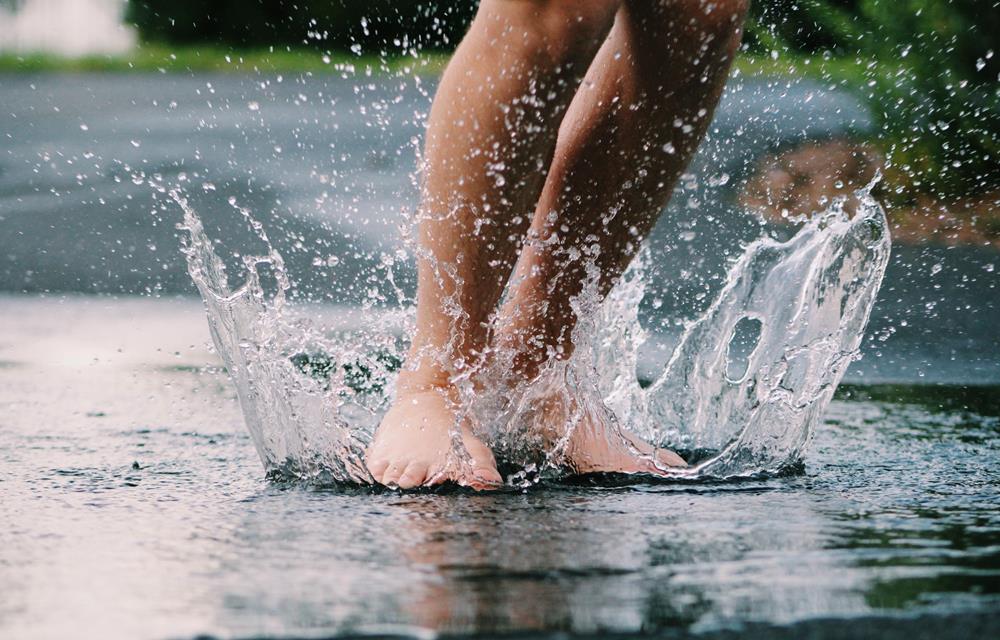
Luckily, we are highly skilled in treating a variety of conditions and issues. Whether you have slight discomfort or severe pain, we can provide you with care that allows you to live the lifestyle you want!
These are just some of the conditions, treatments, and services you will find at our podiatric office. Just ask us if you have any questions!
- Custom Orthotics
- Sports Medicine
- Wound Care
- Achilles Tendonitis
- Ankle Pain
- Ankle Sprains
- Athlete’s Foot
- Bunions
- Corns
- Diabetic Foot Care
- Flat Feet
- Geriatric Foot Care
- Hammertoes
- Heel Spurs/Plantar Fasciitis
- Ingrown Toenails
- Pediatric Foot Conditions
- Toenail Fungus
- Warts
- Arthritic Foot Care
- Foot and Ankle Fractures
- Foot and Ankle Surgery
- Heel Pain
- Neuroma (Morton’s)
- Toenail Fungus
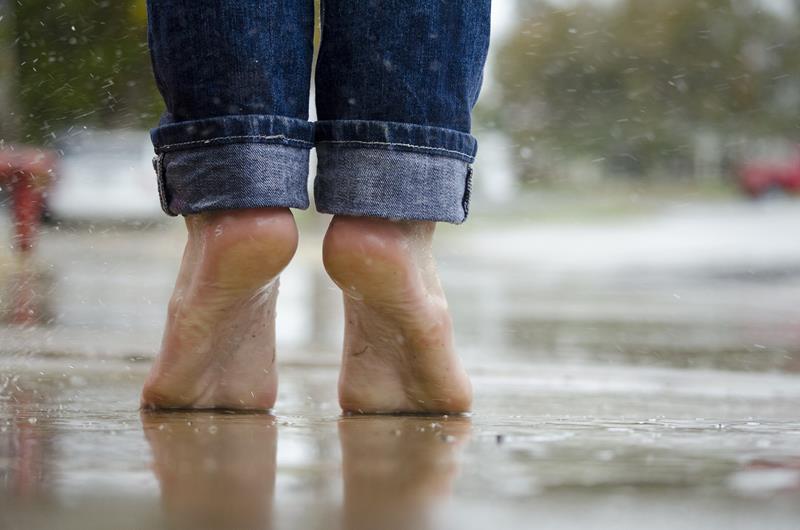
Custom Orthotics
Custom foot orthotics are designed to align the foot and ankle into the most anatomically efficient position. They look similar to insoles, but are biomedical appliances that are custom made to correct your specific foot imbalance. The plastic body of the custom orthotic helps to re-align the foot while you walk. We understand that everyone is different, which is why custom foot orthotics are made just for you.

Sports Medicine
We know how much your foot health can impact your athletic performance, and it is our priority to help get you off of the sidelines and back in the game. Whether you are dealing with a recurring injury or an accident from the big game, we are here to support you through each step of your therapy. Below is a list of some of the most common sports and sports-related injuries we see in our office:
- Martial Arts and Kickboxing: Plantar fasciitis, Achilles tendonitis, sesamoiditis, and ankle sprains. Proper stretching is vital to injury prevention, specifically, a minimum of 15 minutes before beginning exercise.
- Aerobics: With 26 bones in the foot and impact forces reaching up to six times the force of gravity, proper shoes are essential when participating in aerobics. Shoes must provide shock absorption and proper cushioning, as well as stability.
- Team Sports: Baseball, basketball, soccer, football, field hockey, and lacrosse often lead to foot and ankle injuries. Artificial surfaces, improper footwear, and inadequate stretching are recipes for disaster.
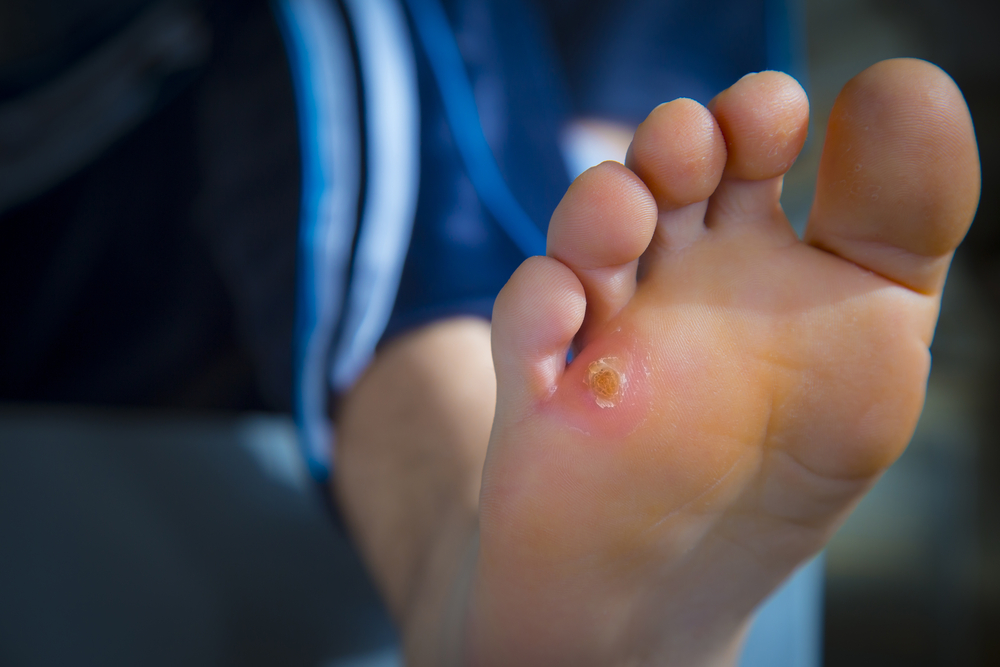
Wound Care
Ulcers on the foot may not always come with pain, but they are serious conditions that should be evaluated by a medical professional. The symptoms of ulcers may include drainage, or red, inflamed tissue. To properly diagnose and develop a treatment plan x-rays may be ordered.

Achilles Tendonitis
Achilles tendinitis is caused by overuse of the band of tissues that connects the lower region of your calf muscle to your heel bone, also known as your Achilles tendon. Those at a higher risk for Achilles tendinitis are runners engaging in intense training or middle-aged people who participate in sports on occasion.

Ankle Pain
The foot and ankle are highly specialized structures that absorb the weight of the body and enable us to move. Experts estimate that the force and pressure on your feet when walking can be up to two times your body weight. This pressure can increase with more vigorous movements such as running and jumping. With so much pressure on your feet and ankles, they undergo a lot of wear and tear throughout your life and are highly susceptible to injury and trauma.
The foot and ankle are a complex system of bones, ligaments, muscles, and joints that provide the structure and stability we need to move freely. If any of these components become compromised or weakened due to injury, overuse, degenerative conditions, or sprains, it can significantly impact your foot’s ability to move and function properly.
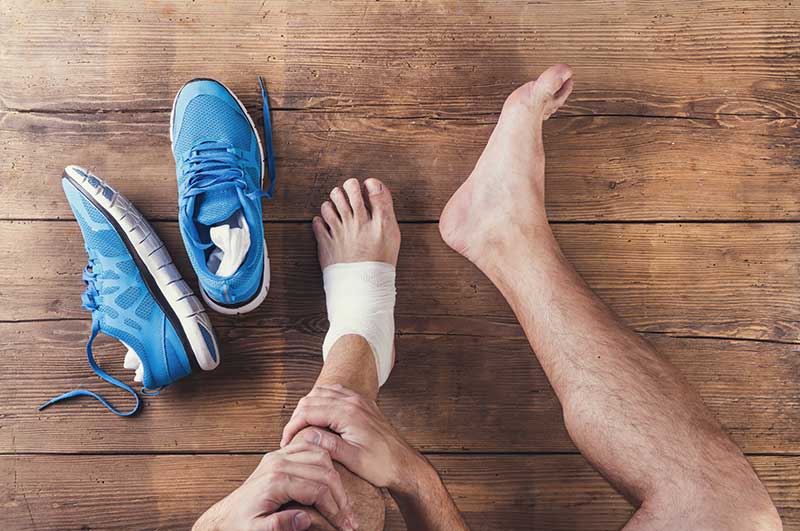
Ankle Sprains
A sprained ankle occurs when you twist your ankle in an abnormal way causing the ligaments holding your ankle bones together to stretch or tear. Most sprained ankles involve injuries to the ligaments on the outer side of the ankle. Treatment for a sprained ankle depends on the severity of the injury. Although you may just need proper rest and pain medications to heal, it is important to have the sprain looked at by a professional to determine the severity and proper treatment.

Athlete’s Foot
Athlete’s foot (tinea pedis) is a specific type of fungal infection that typically begins between the toes. A common cause of athlete’s foot is sweaty feet that are confined to tight shoes for a long period of time. Signs and symptoms of athlete’s foot include a scaly rash that usually causes itching, stinging and burning. Athlete’s foot is contagious and should be carefully monitored and treated. Athlete’s foot can easily be treated with antifungal medications, but the infection is likely to recur. Prescription medications also are available.
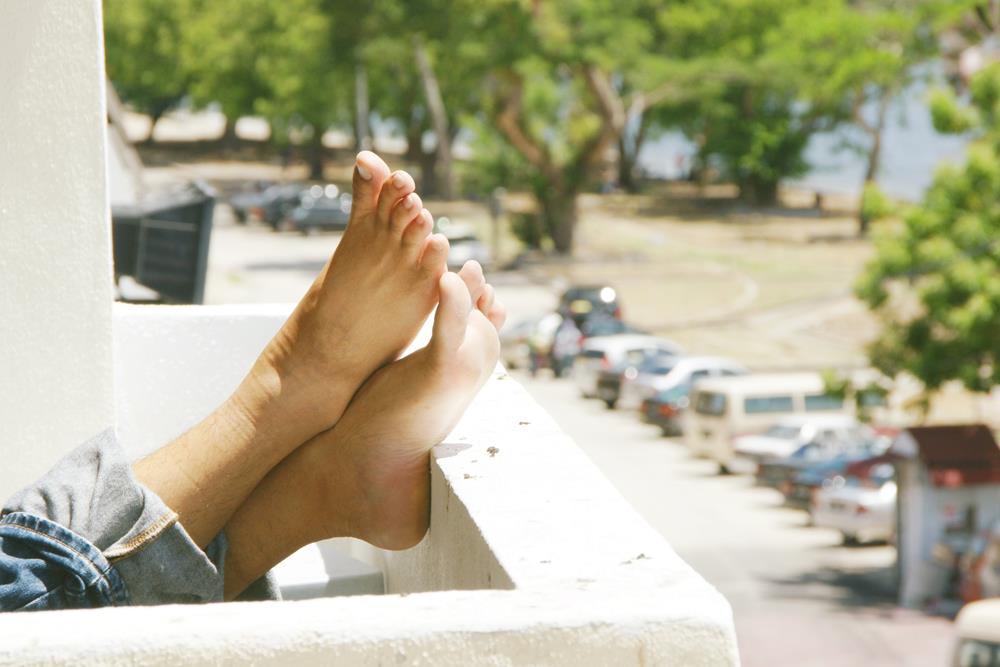
Bunions
A bunion is a bony bump that forms on the joint at the base of your big toe. They can develop from an inherited structural defect, excess stress on your foot, or can result from an existing medical condition.
For the most part, bunions require no medical treatment. However, if you are experiencing one or more of the following, a podiatrist can help alleviate your symptoms.
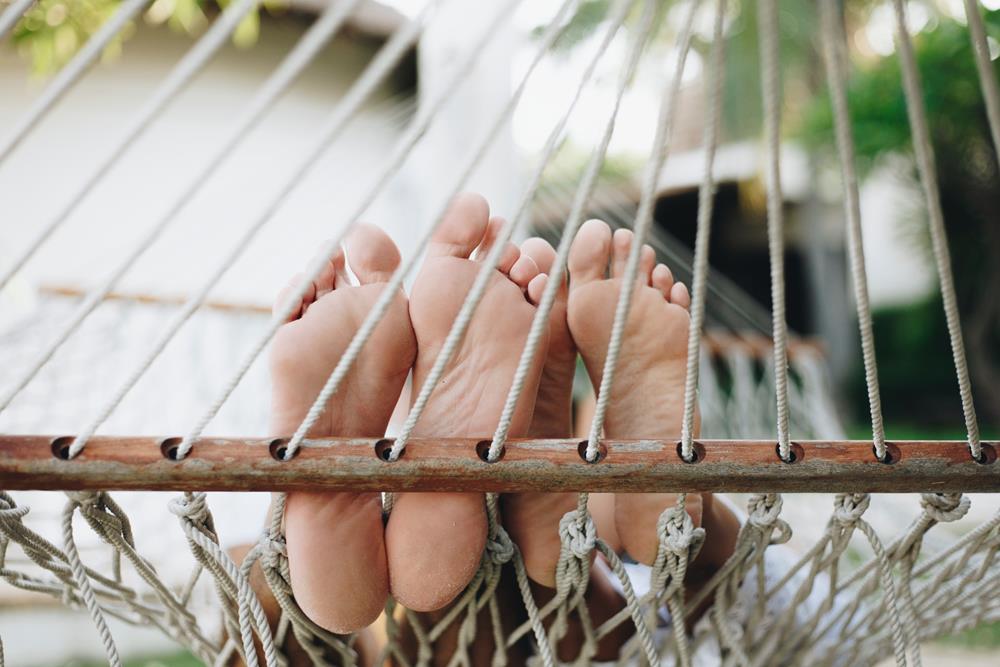
Corns
Corns tend to be smaller than calluses and are the hard center is surrounded by irritated skin. While corns can be found on the bottom of the foot where pressure is usually applied, it is more common that you find corns on the tops and sides of your toes and even between your toes. When pressure is applied, corns can cause significant pain and discomfort.

Diabetic Foot Care
Daily preventative care can help you decrease your risk of developing these other serious conditions like ulcers and infections. Inspecting your feet at the end of the day to look for any abnormalities, maintaining proper hygiene, keeping your feet warm in cold weather, encouraging blood flow in the feet, and maintaining an overall healthy lifestyle can discourage other conditions from developing.
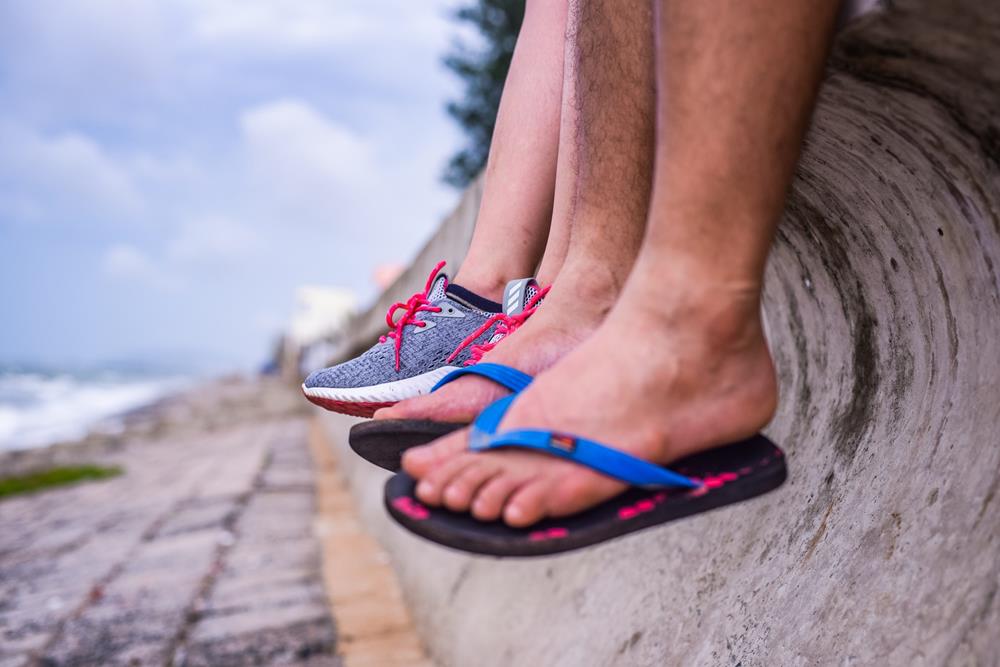
Flat Feet
Flat foot is a condition where the arches on the inside of your feet are flattened which causes the sole of the foot to touch the floor when standing upright. It is likely for flat feet to be caused by the arches not fully developing during childhood and is considered a very common and painless condition. On the other hand, flat feet can occur after an injury or from the normal aging process.
While it is common not to experience any pain or symptoms of flat feet, some people do tend to sense pain in the heel or arch area. Physical activity can irritate the area and inflame the foot along the inside of the ankle. This can be caused by the tendon that is supporting the arch being stretched as it is depreciating.

Geriatric Foot Care
As we age, foot problems are almost inevitable and completely normal. However, there are important steps to take to make sure you stay on your feet.
Health problems such as diabetes, arthritis, and circulatory issues may cause problems that present themselves in the feet. It is very important to monitor your foot health and seek medical attention whenever you notice a problem. Below are some daily tips and tricks to keep your feet healthy.
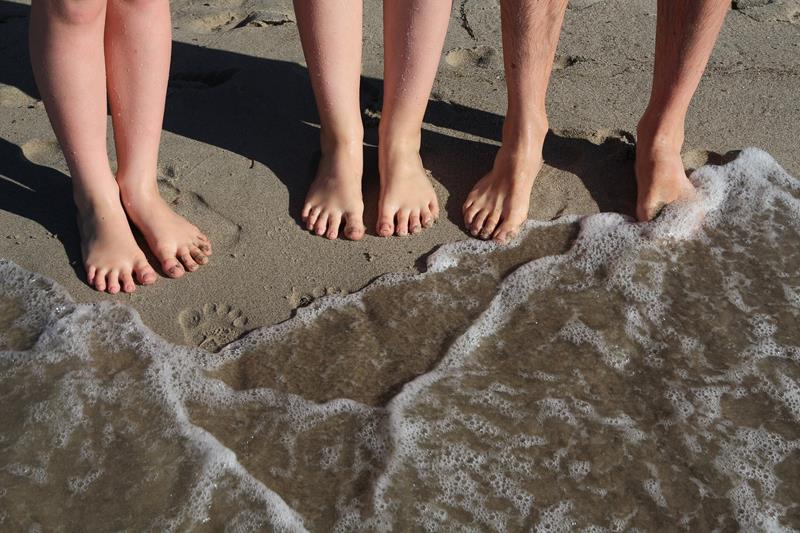
Hammertoes
Hammertoe is a deformity where one or both joints of the second, third, fourth or fifth toes begin to bend outside of their normal alignment. Pressure can begin to weigh heavy on the toes as you wear shoes which is where pain and other symptoms develop.
Hammertoes typically begin with small symptoms and deformities and continue to worsen with time. In its beginning stages, hammertoes are often impressionable which means they can be controlled using minimal treatment. It is important to know the signs of hammertoes to get them evaluated early. If left untreated, hammertoes can become more firm and difficult to manipulate, requiring surgery.
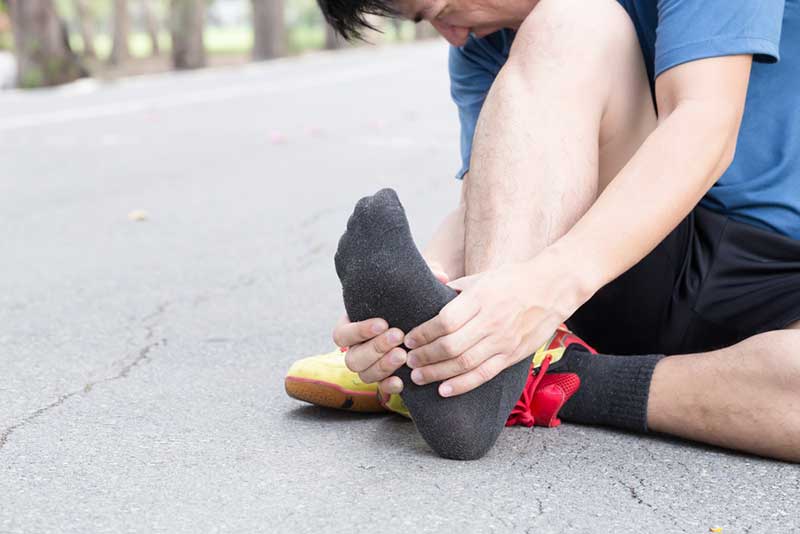
Heel Spurs/Plantar Fasciitis
Heel spurs occur in at least 50% of people who have plantar fasciitis. Past treatments for heel spurs, a bony growth that begins on the front of your heel bone and points toward the arch of your foot, included surgery to remove the growth. Nowadays, surgery is rarely a treatment option and more plans for physical therapy, ice, and pain medications are used to treat heel spurs.
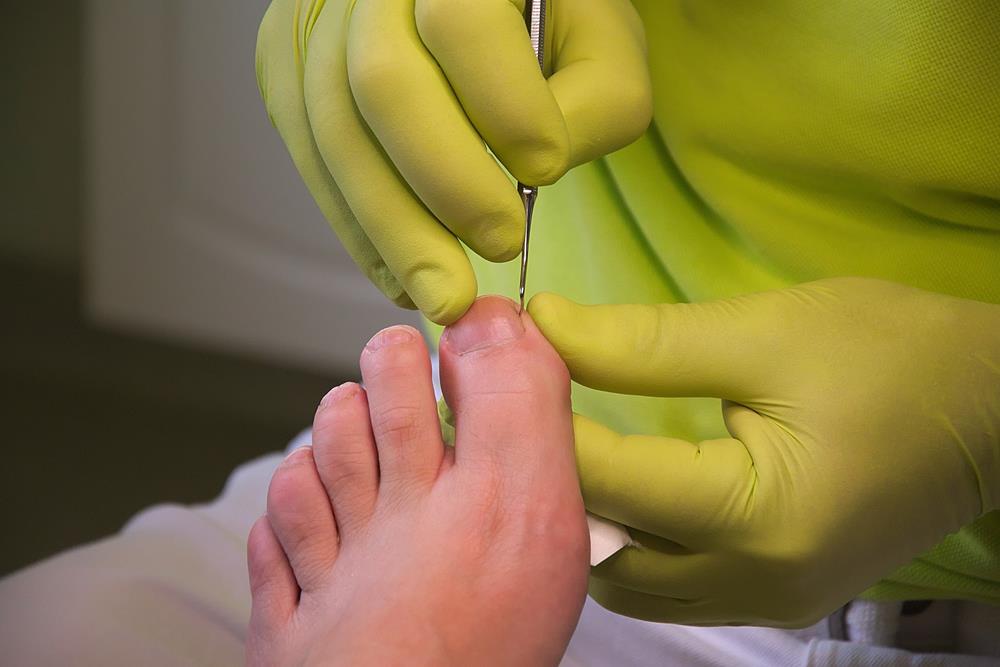
Ingrown Toenails
We have all made the painful mistake of trimming our nails too short at some point in our lives. Sometimes, this can really affect our foot health by causing ingrown toenails.
This happens when the nail grows downward into the skin instead of straight out, usually causing an infection. Ingrown toenails are most common on the sides of the big toe. It can also be caused by shoe pressure, injury, fungal infections, poor foot structure, etc.
Warm water soaks several times a day, properly fitted shoes and socks, and trimming nails in a straight line (rather than rounded) are ways to treat and prevent painful ingrown toenails. If there is an infection, antibiotics may be prescribed.

Pediatric Foot Conditions
Pediatric foot conditions often go unnoticed and are often misdiagnosed. Most doctors dismiss any pediatric foot issues as being a part of normal structural development that children will eventually outgrow. However, foot problems are often prevalent in children due to their high levels of physical activity. Children are resilient, meaning that any potential foot issues may be overlooked.
Initial treatment options for pediatric foot pain, deformities, or injuries include minimally invasive techniques, activity modification, custom orthotics, and anti-inflammatory medications. If these conservative treatment options aren’t helping your child, surgery may be required.
During your child’s appointment, we will conduct a thorough examination to pinpoint the problem, while educating both you and your child on future preventative measures. Our goal is for your child to grow up with happy, healthy, and perfectly functioning feet.
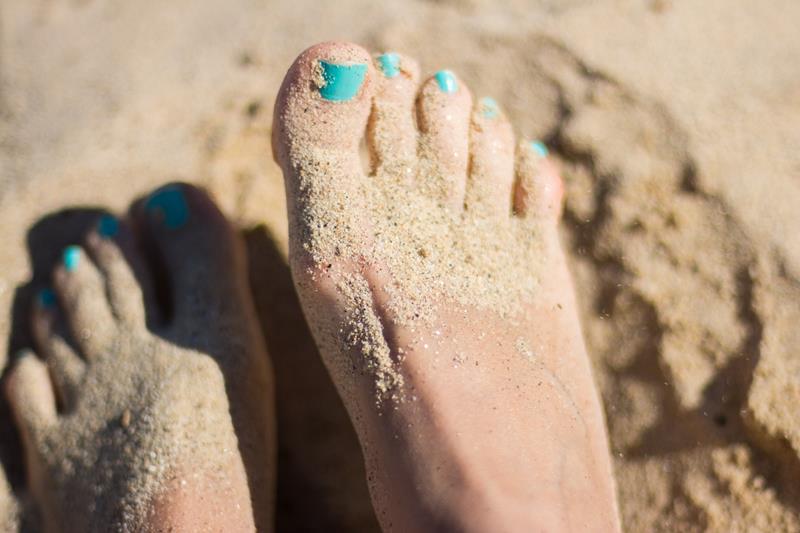
Toenail Fungus
Fungal infections in the toe or fingernails can appear as thickened, discolored, or disfigured. While it may seem like the condition is just an aesthetic concern, fungal infections can lead to worsened symptoms and pain. Diabetes, a weakened immune system, and the normal aging process are all causes associated with fungal infections. It is more likely for senior citizens and adults to develop a fungal infection as opposed to children.

Warts
Plantar warts are caused by the HPV virus and cause tiny cuts and breaks on the bottom of your feet.
While most plantar warts are not a major health concern, it is advised you see a doctor to have the warts examined and removed. Some symptoms include small, rough lesions on the base of the foot, calluses in one spot, and tenderness when walking or standing for long periods of time.
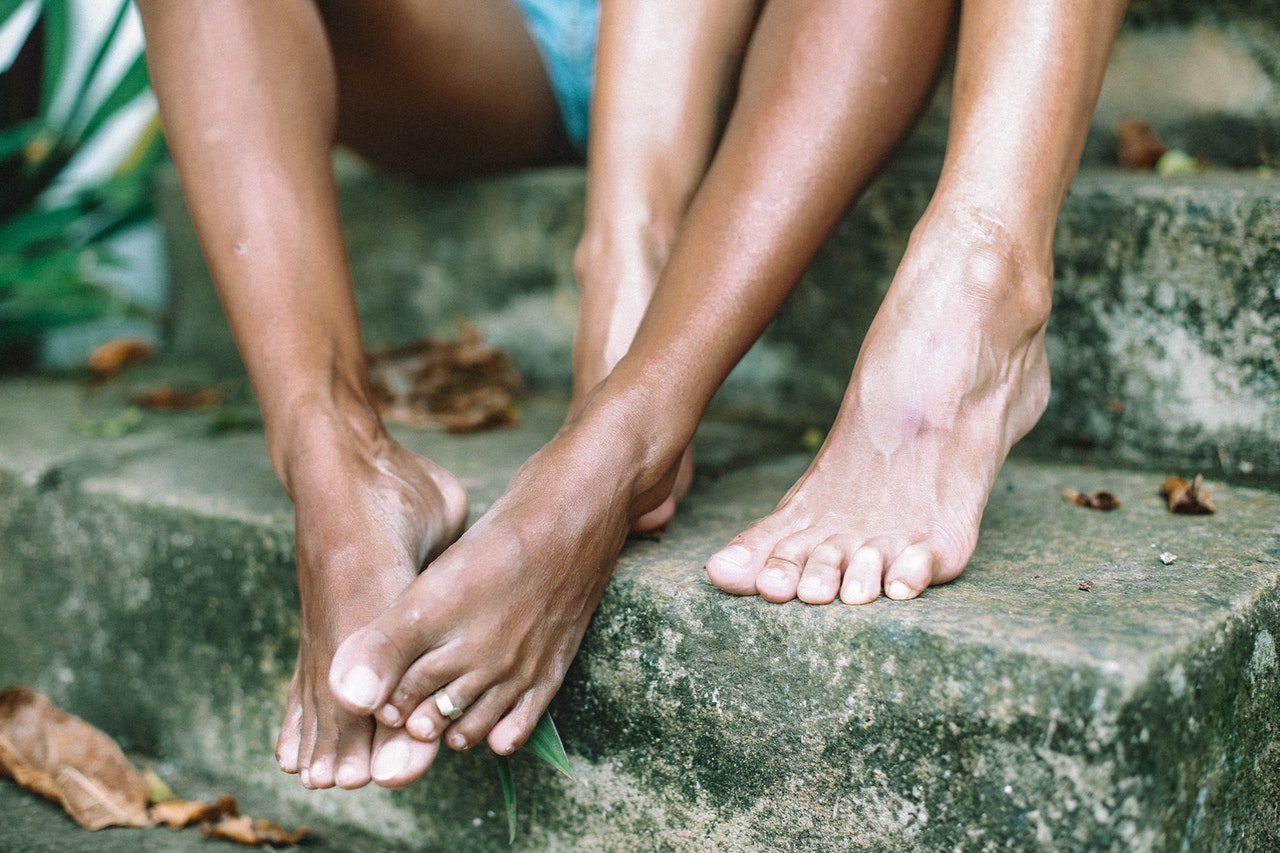
Arthritic Foot Care
Arthritis, or joint pain or joint disease, is the leading cause of disability in America. More than 50 million adults and 300,000 children are suffering from some type of arthritis. Common symptoms include swelling, pain, stiffness, and decreased range of motion. Severe arthritis can result in chronic pain, inability to perform normal day-to-day activities, and has the potential to cause permanent joint damage.
To determine whether or not you may be suffering from arthritis or to determine the severity, your medical professional will perform blood tests and conduct an imaging scan (ie: x-ray, CAT scan or MRI). Eating healthy, staying active, and understanding your type of arthritis and treatment options is crucial to decreasing your discomfort and paving the way for an enjoyable, happy life.
Request an Appointment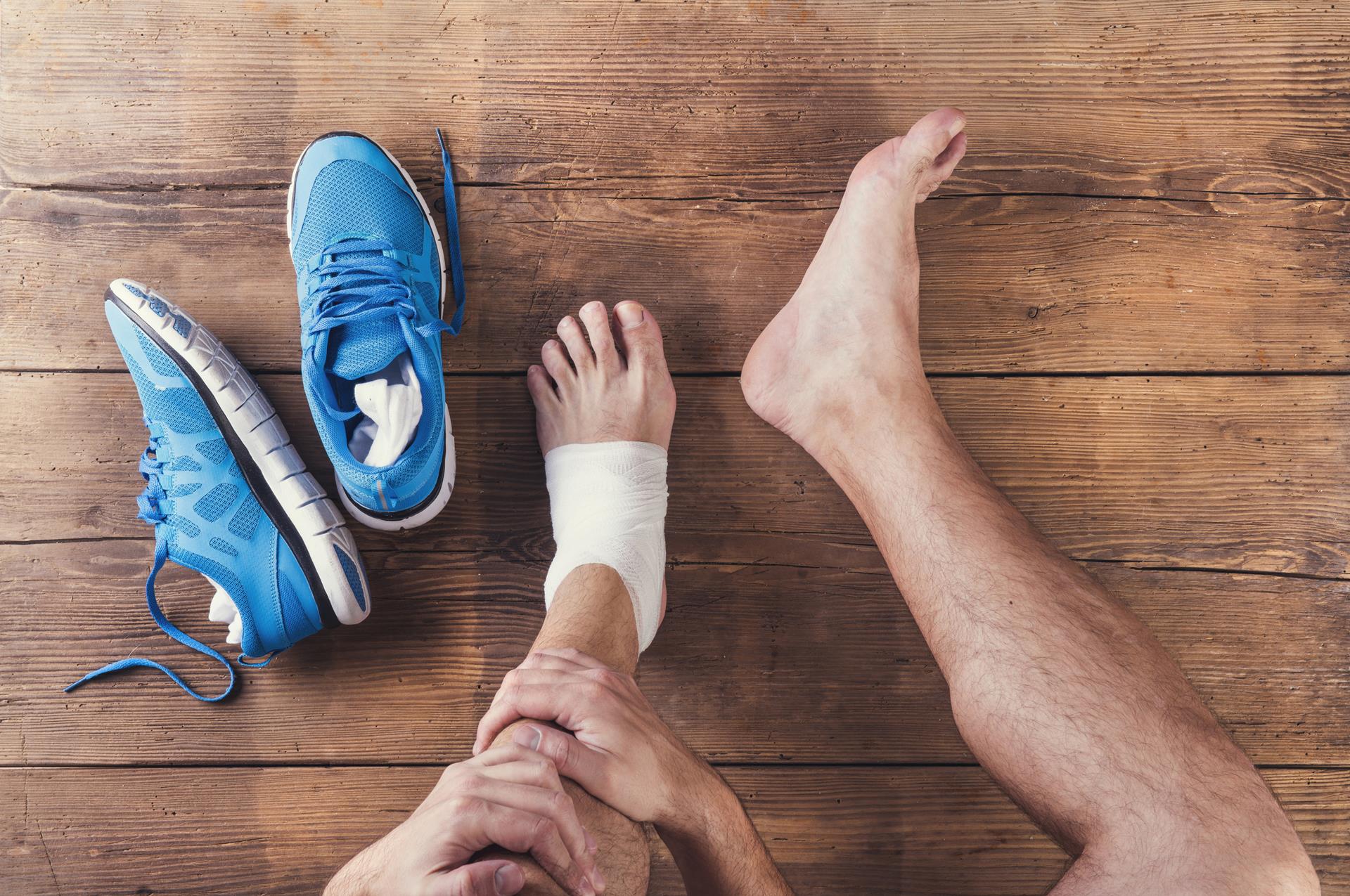
Foot and Ankle Fractures
Since nearly one-fourth of the bones in our body are in our feet, fractures of the foot are common and rarely debilitating.
There are two types of fractures. A stress fracture typically occurs in the space between the toes and middle of the foot, usually as a result of a physical activity gone awry. These fractures are only on the surface of the bone. General bone fractures extend through the bone. These injuries are usually caused by trauma to the foot.
Depending on the fracture and placement, different treatments will be discussed. Foot fractures typically heal on their own, although more serious cases may require surgery.
It is important to seek medical attention as soon as possible if you suspect your foot is fractured so treatment can begin right away.
For more information on fractures or to request an appointment, don’t hesitate to contact us today at (413) 397-8900!
Request an Appointment
Foot and Ankle Surgery
Surgery on the foot and/or ankles may be required in severe cases of breaks or fractures to reset the bones. Our doctors will carefully review your case and advise you on your treatment options.
Treatments for broken bones in the foot and ankle typically include rest, NSAIDs, and a cast or brace. Depending on the severity of the injury, corrective surgery may be needed to secure the bones in place for proper alignment.
It is important to seek medical attention as soon as possible if you suspect your foot or ankle is fractured or broken so treatment can begin right away.
Request an Appointment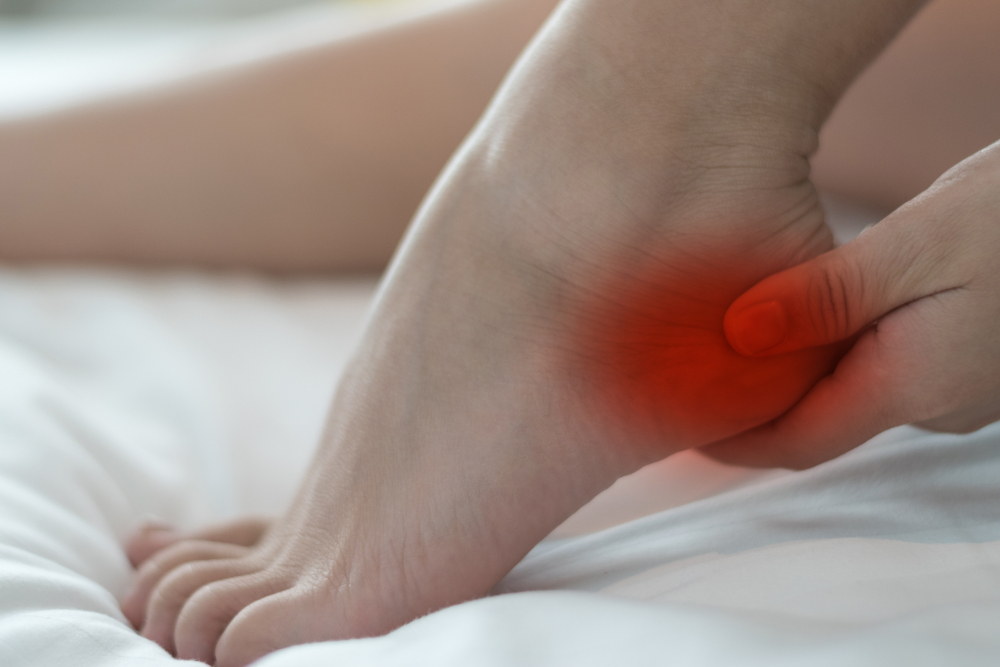
Heel Pain
Heel pain is one of the most common complaints from patients. While heel spurs may or may not show up on an x-ray, the spurs themselves are a result of the actual problem: plantar fasciitis.
Plantar fasciitis is caused from inflammation of the connective tissue that stretches from the base of the toes to where it attaches to the heel bone. Symptoms include stiffness and tightness in the back of the leg and bunion joint, along with an uneven gait. Heel pain is often the first sign of plantar fasciitis.
Treatments include anti-inflammatory medications, ice packs, stretch exercises, steroid injections, orthotics, and physical therapy. For persistent cases, Radio Frequency Lesioning may be needed.
For more information on plantar fasciitis or to request an appointment, please don’t hesitate to contact us today at (413) 397-8900!
Request an Appointment
Neuroma (Morton’s)
A neuroma can occur in many areas of the body when nerve tissue thickens. Morton’s neuroma is the most typical neuroma that occurs in the foot and it occurs between the third and fourth toes. Also known as an intermetatarsal neuroma, the name describes its location in the ball of the foot.
Compression and irritation typically cause the nerve tissue to thicken. This pressure creates inflammation of the nerve, ultimately causing untreatable damage to the nerves in the foot.
If you have a neuroma, you may experience one or more of these symptoms:
- Tingling, burning or numbness
- Pain
- A feeling that something is inside the ball of the foot
- A feeling that there is something in the shoe or a sock is bunched up
After a careful evaluation of the neuroma, DeCaro Total Foot Care Center will begin forming your treatment plan. Treatment plans vary depending on the severity of the neuroma.
Request an Appointment
Toenail Fungus
If you routinely find your toenails yellowed and deformed, fungi may be to blame. There is a type of fungus that thrives in dark, moist, and warm areas, much like your shoes, shower, locker room, etc. You may notice yellow and/or white spots on the nail, along with a thickness that develops over time. If one nail is infected and left untreated, it can easily spread to other nails.
Treatments include a laser cleaning of the nail(s), oral medications, and medicated or non medicated anti-fungal cream.
Fungal nail infections require a process of treatments along with a continual effort to prevent it from recurring. Keeping the infection under control can include thoroughly washing and drying feet, applying anti-fungal cream, not sharing nail clippers or shoes/socks, wearing dry cotton socks and changing them often, wearing dry shoes, and using shower sandals in wet, public places.
For more information on how to treat fungal nail infections or to request an appointment, don’t hesitate to contact us today at (413) 397-8900! It’s important to nip the fungus in the bud before it spreads!
Request an Appointment